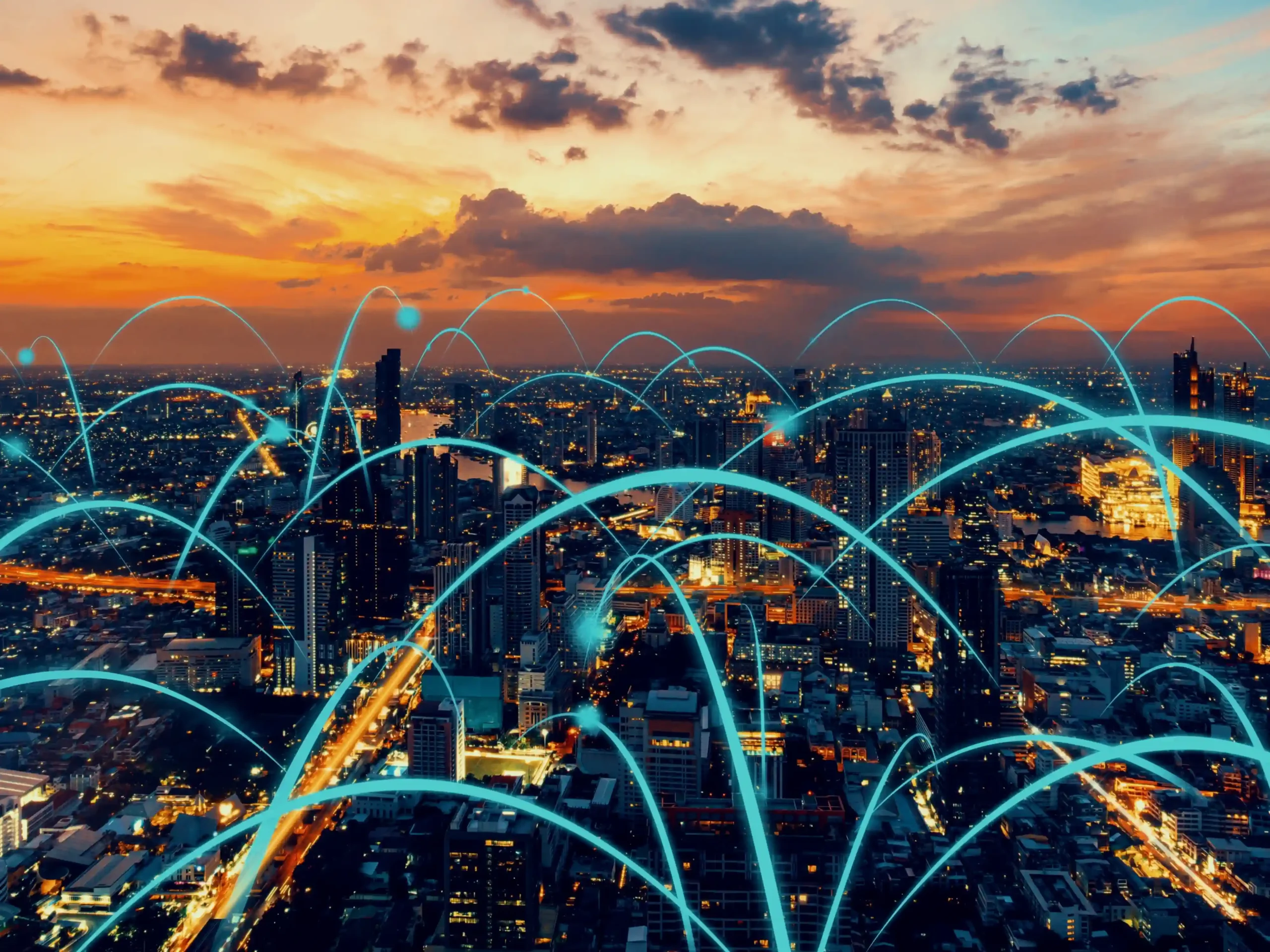The concept of smart cities is rapidly transforming urban landscapes. With the integration of IoT, AI, and automation, cities are becoming more efficient, safer, and highly connected, offering residents a seamless and sustainable lifestyle. These innovations are improving infrastructure, optimizing energy use, and enhancing public services for a more intelligent way of living.
1. Intelligent Traffic Management
Traffic congestion is a growing problem in urban areas, causing delays, increasing pollution, and wasting fuel. Smart traffic management systems use AI-powered cameras, GPS data, and real-time monitoring to analyze road conditions and adjust signals dynamically. Adaptive traffic lights reduce waiting times, while AI-driven public transport systems improve scheduling and efficiency, making commuting faster and more sustainable.
2. Sustainable Infrastructure
Modern cities are integrating solar-powered streetlights, automated waste management, and energy-efficient public buildings to minimize environmental impact. Green buildings with smart climate control optimize energy consumption, while self-sustaining neighborhoods generate their own power through renewable energy sources. Green spaces such as urban forests and vertical gardens help improve air quality and reduce the heat island effect, making cities healthier.
3. IoT and Connected Living
IoT (Internet of Things) plays a crucial role in making smart cities more interconnected and user-friendly. Public Wi-Fi networks, smart meters, and AI-assisted city services allow residents to access real-time data about traffic, pollution levels, and emergency alerts. Smart homes integrate seamlessly with city infrastructure, allowing residents to control appliances and monitor energy consumption remotely.
4. AI-Powered Security & Surveillance
Public safety in smart cities is significantly enhanced by AI-driven security systems. Facial recognition technology, predictive policing, and real-time monitoring through connected CCTV networks help law enforcement prevent and respond to crime more effectively. Smart streetlights adjust brightness based on pedestrian activity, improving security while saving energy. AI-based emergency response systems ensure faster medical or police assistance.
5. The Future of Smart Cities
With 5G technology, smart cities will become even more interconnected, enabling real-time data sharing between public services, businesses, and residents. Blockchain-based governance enhances transparency in city administration, while autonomous public transport systems reduce congestion. AI-driven waste collection, digital citizen engagement platforms, and climate-adaptive urban planning will make cities more sustainable, efficient, and resilient to environmental changes.
6. Smart Water Management
Water scarcity is a pressing global issue, and smart cities are tackling it with advanced water conservation technologies. AI-powered leak detection systems prevent wastage, while smart irrigation networks adjust water supply based on weather forecasts. Rainwater harvesting and greywater recycling systems further reduce dependency on municipal water, making urban areas more water-efficient and eco-friendly.
7. Smart Healthcare & Emergency Response
Healthcare in smart cities is evolving with telemedicine, AI-driven diagnostics, and connected emergency response systems. Wearable health trackers provide real-time data to hospitals, while automated ambulance dispatch systems ensure quicker response times. AI-powered health monitoring in public areas can detect potential disease outbreaks early, enabling cities to act swiftly in preventing epidemics and managing healthcare resources effectively.
Conclusion
Healthcare in smart cities is evolving with telemedicine, AI-driven diagnostics, and connected emergency response systems. Wearable health trackers provide real-time data to hospitals, while automated ambulance dispatch systems ensure quicker response times. AI-powered health monitoring in public areas can detect potential disease outbreaks early, enabling cities to act swiftly in preventing epidemics and managing healthcare resources effectively.

